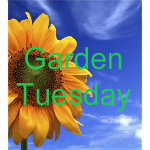If you want to maintain your garden as an organic one, then studying how to create and keep a compost heap is necessary. If you don’t want to bother with that and you have a small garden patch, then you can buy natural and organic fertilizer. You can collect tips from internet, or family members. It just takes a bit of space, lots of love and care and a little water and food, and your garden will be your pride and source of better health. It also provides some exercise, so that’s an added benefit! Many plants are suitable and capable of growing in small plots in soils of poor fertility, including even contaminated soils, or those suffering from high levels of leaching.
Vitamins and minerals are very essential to growing kids that’s why moms have to know the right food to feed their little ones with. Grow foods, as the name suggests, makes people grow. These are dairy products like milk, margarine, yogurt, and the protein-rich ones like pork, fish, etc. These foods make the bones and muscles stronger. These foods could help your child run faster and allows him or her to be able to do a lot of other activities.
Fresh and nutritious produce for the participating gardeners or families. If organic methods are used, then the produce is much healthier than any commercially grown vegetables. Foods grown organically restrict the use of pesticides and insecticides and other synthetic chemicals. Likewise, animals grown organically are not regularly given antibiotics and other medication which enters the food supply and may be ingested by human consumers. Instead, organic farmers use renewable resources to grow their vegetables, fruits and animal sources. Indoor garden offers some perks that you can’t get from outdoor gardening. However, just as there are perks, there are also drawbacks. This article will examine both. You will also find places to situate your indoor garden, what types of flowers and plants you can grow, as well as some gardening tips to help your indoor garden flourish.
Some typical indoor garden plants that require low to medium light are Philodendrons, Cyclamens, African violets, Boston ferns, and Creeping Fig. Along with the Boston fern, there are many types of ferns that require low to medium light levels and are a beautiful addition to an indoor garden. A helpful tip is that darker leaved plants typically need less light that their lighter leaved cousins. You should then decide location for the placement of the pots. The lights that the plant would receive are yet another necessity of your indoor garden that you must consider at all cost. However, you need to be careful of the heat and warmth your plant would be getting from the surrounding atmosphere because you might find yourself in the need of proper ventilation along with it as well at some stage. Another indoor gardening idea is that you may wish to place your plants at different places around your house, so you benefit from colors and well-oxygenated air throughout the house. However, when growing plants like this, you have to ensure that they will constantly have enough light, warmth and humidity.
Happy Gardening!





















I can’t wait to have a garden when we buy a house. I think it would be easier for me to do the outdoor garden.